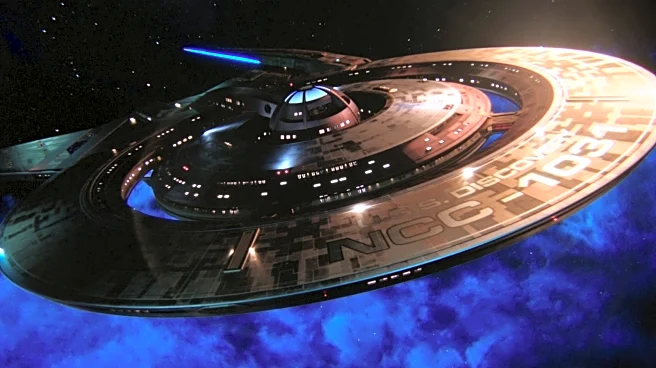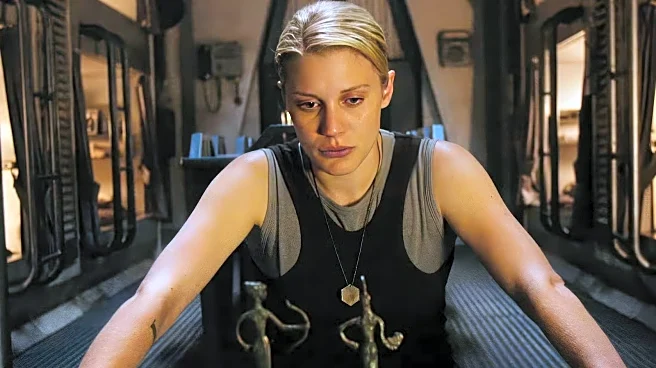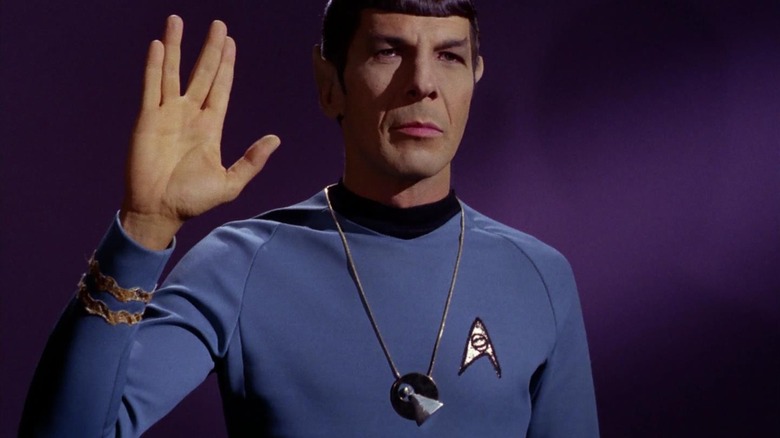
The IDIC symbol was first discussed in the "Star Trek" episode "Is There In Truth No Beauty?" (October 18, 1968). The IDIC symbol consisted of a triangle, sporting a small gem at one of its points, overlaid across a circular disc, partially covering a non-concentric hole. Although not seen on "Star Trek" a lot during its classic years (it was seen in only one episode of "Star Trek" and one of "Star Trek: The Next Generation"), the IDIC symbol was still well-known to Trekkies, and pins or necklaces
could easily be acquired at conventions. It was the symbol of the Vulcan people and was said to represent their central philosophy: Infinite Diversity in Infinite Combinations. The Vulcans' believed in strength via heterogeneity, growth through pluralism. Although the Vulcans themselves all tended to adhere to a singular and strict ethos of logic and emotionlessness, they acknowledged that multiculturalism was a positive force — indeed, the most positive force — in the galaxy.
IDIC wasn't just at the core of Vulcan beliefs, however, but could be said to undergird all of "Star Trek" as a media franchise. Series creator Gene Roddenberry famously populated the bridge of the U.S.S. Enterprise with a multicultural mixture of characters, all of them working together in harmony, aiding one another in a common goal. In Roddenberry's future, nationalism was defeated, Earth was united, and prejudice was at an end. Those triumphs led directly to a high-tech utopia wherein the galaxy was (more or less) at peace. Combining our cultural forces, being as diverse as possible, will save everyone in the long run.
George Takei, who played Sulu on "Star Trek," feels that the IDIC philosophy was salient in real life just as much as on the show. Takei spoke of IDIC on a recent episode of the video interview series "The Sackhoff Show," and he noted that IDIC was a philosophy he was already living before he even joined the series. That "Star Trek" laid it out so simply, he felt, was incredibly salient and poetic.
Read more: The 15 Best Guest Stars On Star Trek, Ranked
Infinite Diversity In Infinite Combinations
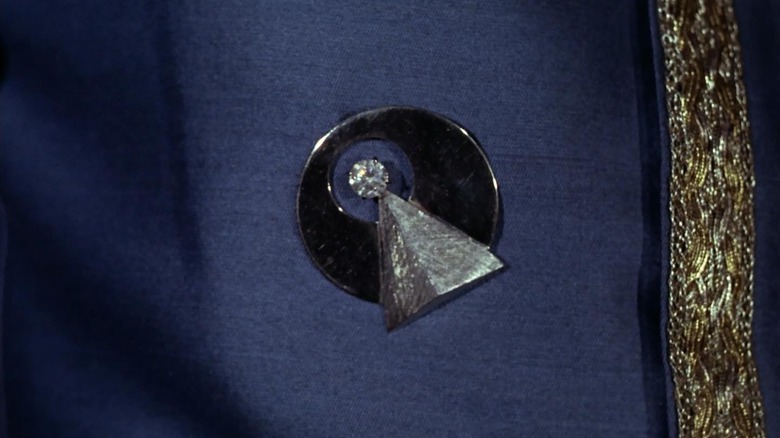
Takei was very fond of his years on "Star Trek," and took its diversity to heart. He noticed that Roddenberry had assembled a crew of characters from all walks of life. As he explained:
"That acronym we had on 'Star Trek,' IDIC. Infinite Diversity in Infinite Combinations. It was a way I thought way before 'Star Trek.' But it so captured what we need in order to reach that idealized future. Look at that cast! I mean, it's diverse. The first officer is a half-alien. Pointy-eared, green blooded Spock. Played brilliantly by Leonard Nimoy. We had a country doctor. The engineer was a Scotsman played by a Canadian."
Takei then talked a little bit about how he and James Doohan — who played Scotty — became good friends, and how Doohan was not only Canadian, but of Irish ancestry. And yet he had come to represent Scotland in popular media in an enormous way. The diversity of "Star Trek" was always one of its most prominent features, as any Trekkie can tell you, and Takei was thrilled by the idea. He continued:
"We had, at the height of the Cold War, a character who spoke with a Russian accent and named Chekov. Who was a trusted member of our team. And we also had an African-America woman — one of the first times that a television series had a woman in leadership position. Nichelle Nichols was the personification of a lot of important things."
These are talking points that Roddenberry didn't necessarily articulate while pitching "Star Trek" in the mid-1960s, but he did seem to form them more completely in the early 1970s when he began attending "Star Trek" conventions. During conversations with fans and answering questions on panels, Roddenberry suddenly became sharply aware of how progressive his TV series was. IDIC has been the spoken thesis of "Star Trek" ever since.
Leonard Nimoy Objected To The Introduction Of The IDIC Pin
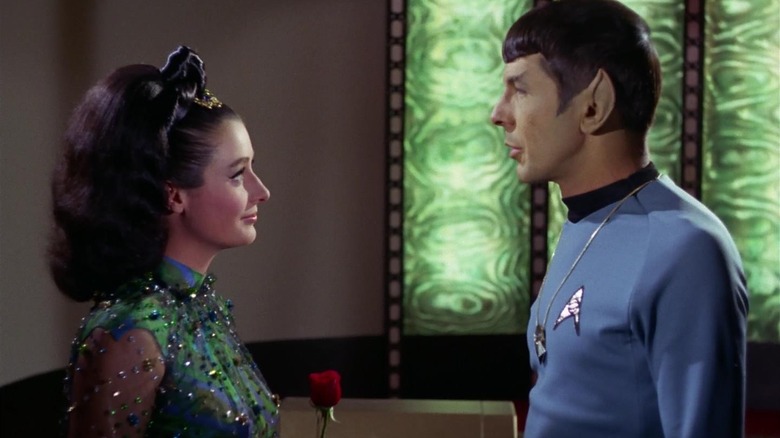
Roddenberry's series may have been set in a post-capitalist utopia, but Roddenberry himself was a capitalist writ large. He famously tried to hoard writers' salaries for himself, and infamously wrote unusable lyrics for the "Star Trek" theme song just so he could be credited as a co-songwriter ... and get half the royalties. Roddenberry knew that merchandise was a big money-maker for "Star Trek," and any new symbol that could be transformed into a necklace or pin was going to sell well to fans.
Because of Roddenberry's money-forward thinking, Nimoy objected to the inclusion of the IDIC symbol on "Star Trek," something the actor wrote about in his autobiography "I Am Spock." He knew that Roddenberry was only trying to squeeze one more piece of merch out of the show, a move he saw as incredibly crass. To this day, one can find IDIC pins on StarTrek.com. The symbol was created by "Star Trek" costume designer William Ware Theiss.
However financially mercenary the creation of Spock's necklace might have been, the philosophy behind it remains sound. Infinite diversity is a grand, aspirational philosophy. It's also a powerful notion to wield at a time when diversity programs are being intentionally shuttered across the United States, and multiculturalism is becoming increasingly embattled as a concept. We can have a utopian, peaceful future where humankind becomes universally better, where we all become smarter and more intellectually ambitious, but it's vitally important to include everyone in that vision. To listen to every story, to hear every progressive point of view. Anything else will hold us back. "Star Trek" implores that we go boldly forward.
If you're looking for the easiest way to keep up with all the major movie and TV news, why not sign up to our free newsletter?
Read the original article on SlashFilm.



